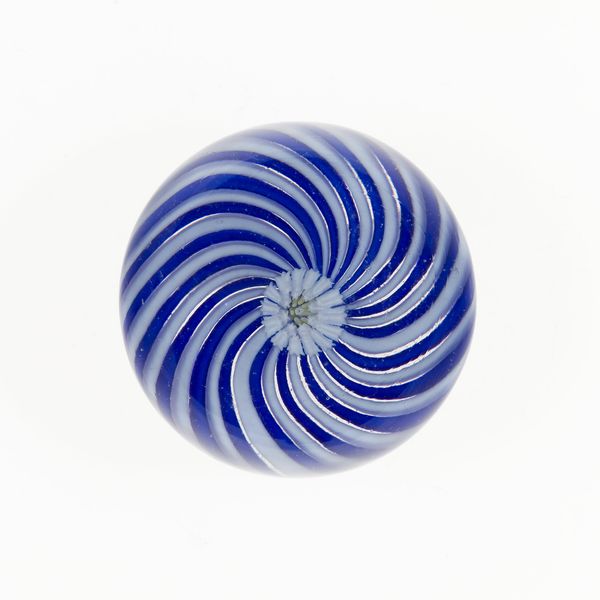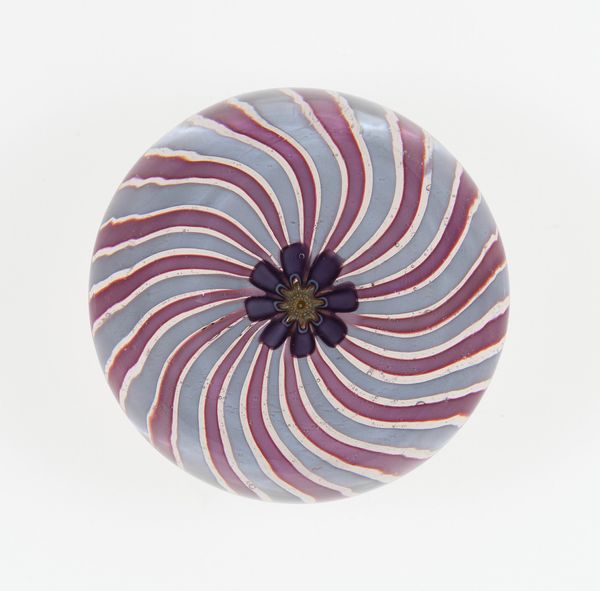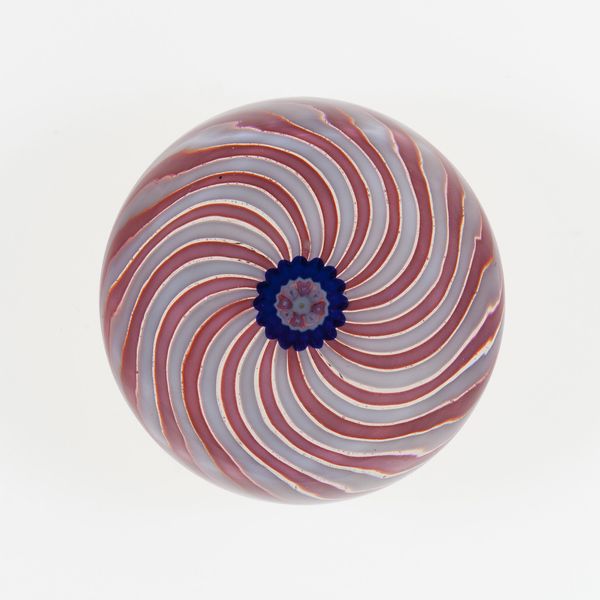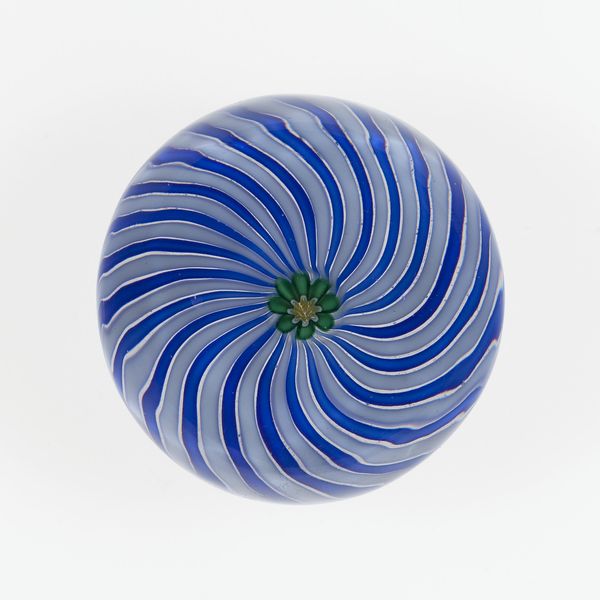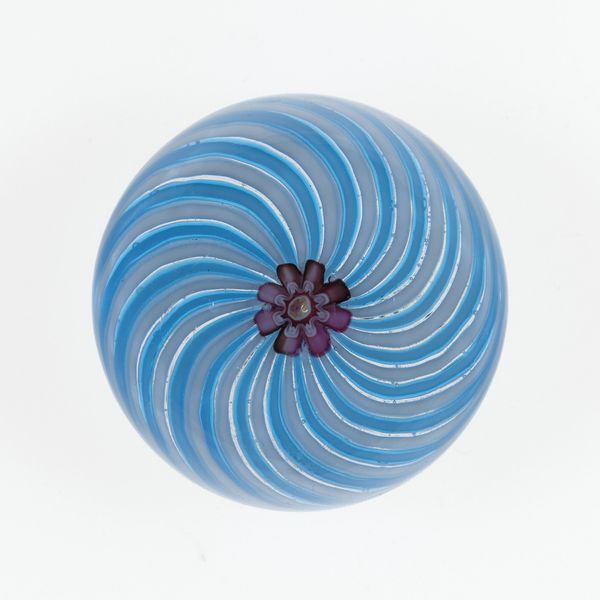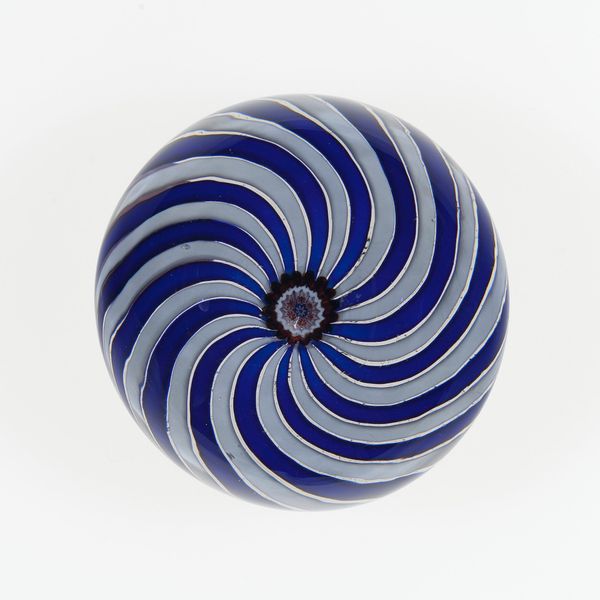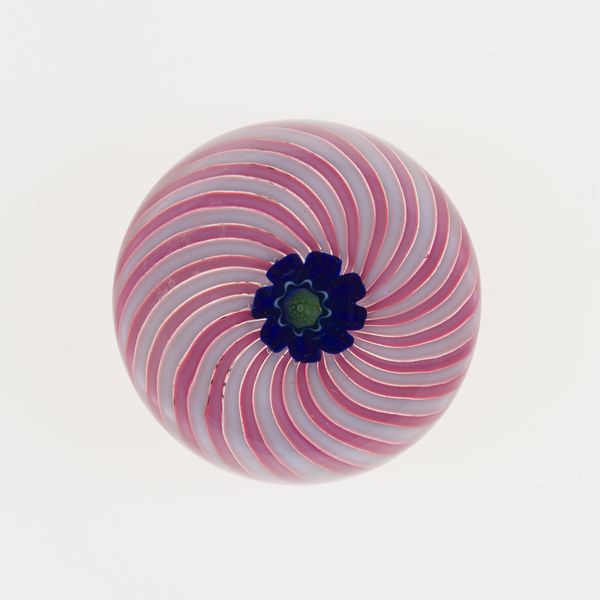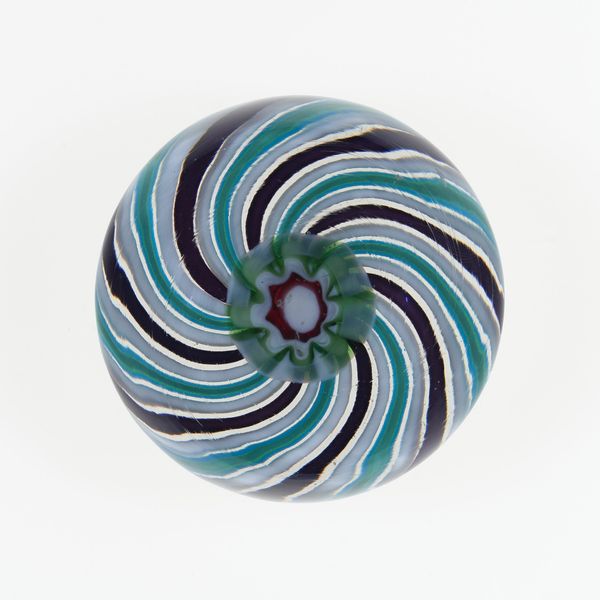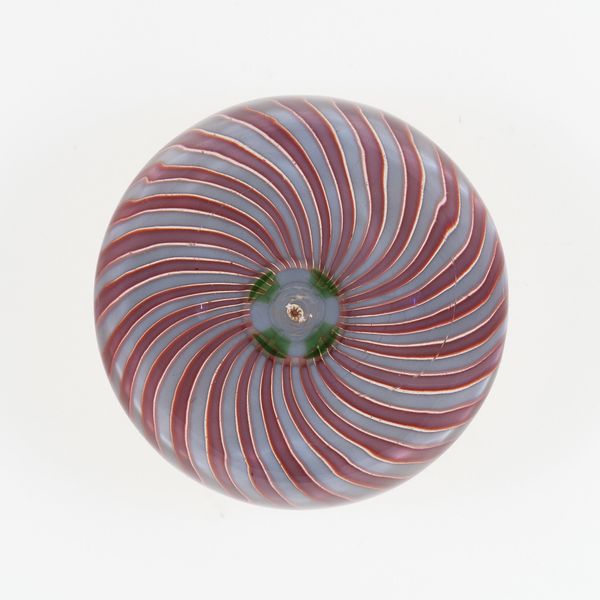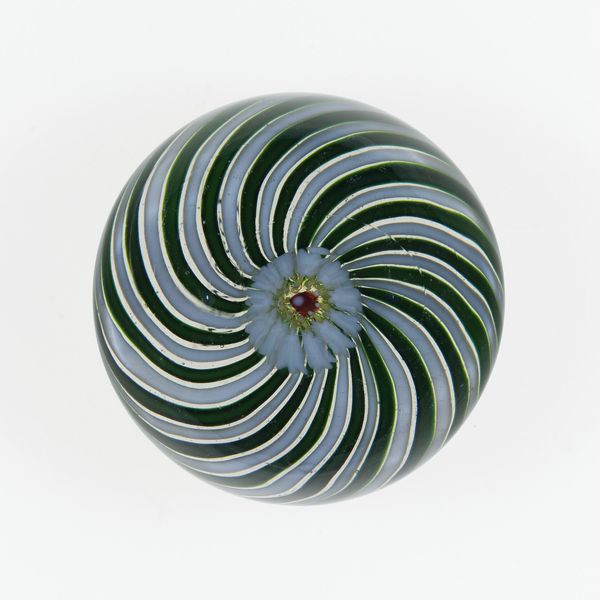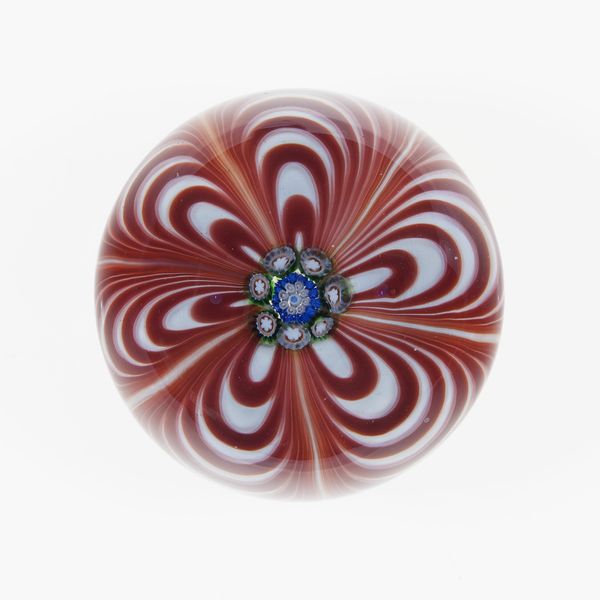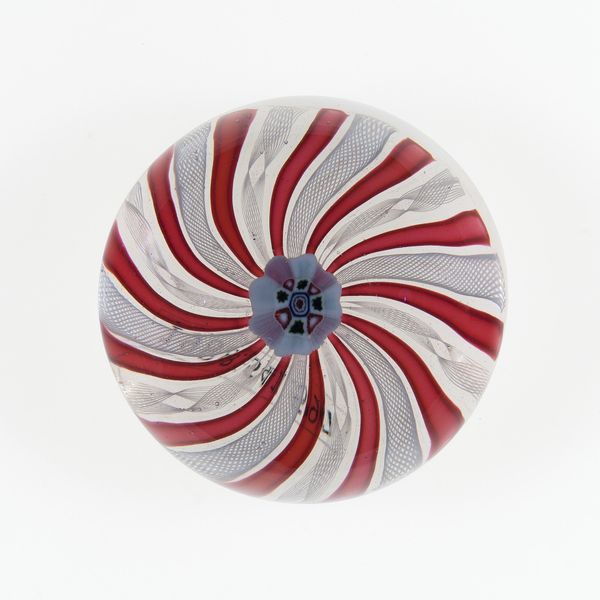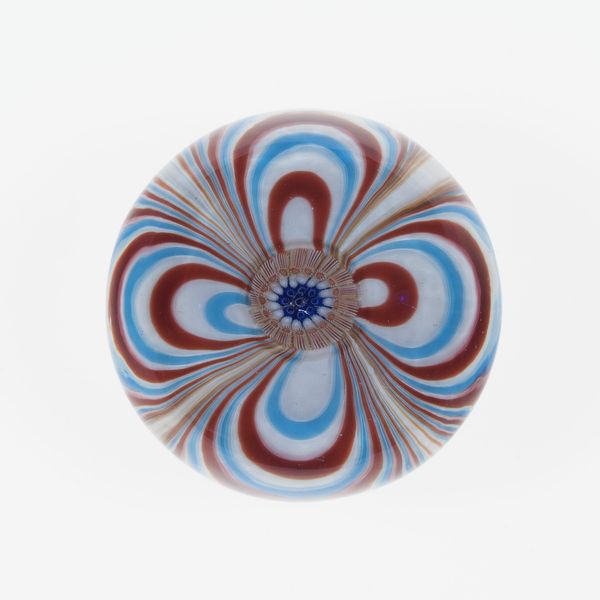
glass
#
glass
#
geometric
#
decorative-art
Dimensions: Diam. 5.2 cm (2 1/16 in.)
Copyright: Public Domain
Editor: Here we have "Paperweight," a 19th-century glass piece crafted by the Clichy Glasshouse. The delicate swirls give it such a whimsical feel. What strikes you about this object? Curator: The spiraling bands of alternating color, primarily lilac and off-white, draw the eye inexorably toward the center, which is punctuated by the floral motif. This creates a tension between centrifugal force and focused stillness. Note how the symmetry functions here: radial symmetry of the blossom against the swirling bands which implies motion. Editor: I hadn’t really thought about that tension! Do you think the symmetry also emphasizes the flower's stillness? Curator: Precisely. It creates a focal point, arresting the eye. Observe the use of color. How does the glass's inherent reflective property affect your perception of form and depth? Editor: I see what you mean. The way light refracts makes it look deeper, almost like you could fall into the pattern. Curator: Consider also how the materiality of glass contributes. Its transparency is manipulated to create opacity and distortion. What does that say about its function as merely decorative or potentially something more? Editor: So, it is more than just decoration through careful use of color and the tension the geometric designs give off? Curator: Absolutely, these aesthetic choices invite viewers to delve deeper. Its beauty resides not just in its appearance but in its structural and optical properties, engaging our senses and intellect. Editor: It’s amazing how much is going on just within this single paperweight. Thank you for pointing out those things, I definitely wouldn’t have caught those at first! Curator: My pleasure. Analyzing the intrinsic qualities is key to understanding the enduring appeal and aesthetic depth of works like this.
Comments
No comments
Be the first to comment and join the conversation on the ultimate creative platform.
